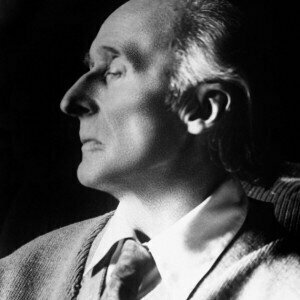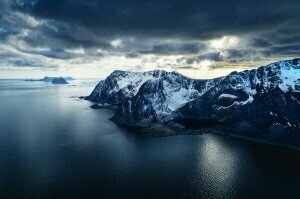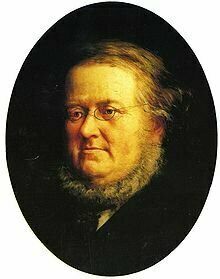
Frederick Delius

Norwegian Fjords
In 1915, Delius’ tone poem Eventyr started to hit the page, was set aside (for a trip to Norway), and then completing it by the end of 1917. Although the English title is “Once Upon a Time,” Delius’ Norwegian title of Eventyr, Folk Tales, better captures the nature of the music. This isn’t a tone poem built around ‘prettifies tales of childhood memory,’ but rather tales of giants and trolls, dark forests and mysterious cavern, ‘underearthly’ creatures and helpless captive or fleeing humans. No specific tales are told, or captured in the music, but more the feeling of the stories and the locale.
Delius: Eventyr (Once Upon a Time) (Aarhus Symphony Orchestra
Holten, Bo cond.)

Peter Christen Asbjørnsen
“Eventyr” is not based on any particular story of Asbjorønsen; it is a résumé-impression of the book…[Asbjørnsen’s are] the old legends still quite alive with lonely peasants, hunters and mountaineers. These people have a naïve belief in the “Underjordiske” (the Underearthly ones), Trolls, Heinzelmännchen, hobgoblins; who either help the humans or, if provoked, become very revengeful. A boy alone in a forest would imagine he heard them trotting after him, and get very frightened. At a wedding or Xmas meal a little dish of cream porridge is put on the loft for these underearthly ones, or else they might be offended – they have been known to fetch girls away (even the bride of a wedding) in such cases and dance with them furiously till they fall down unconscious. A hunter’s luck would depend on their good or bad will. In the queer noises at night in lonely huts and woods you would imagine you heard the hordes of these mysterious beings galloping along in the distance.
At one point (07:14), a 20-voice male chorus makes off-stage shouts, thought by one biographer to be the voice of the trolls pursuing the lonely boy in the forest mentioned in Delius’ programme note.
The work starts on a solemn, almost mysterious note, and throughout the work, Delius’ uses the expressive possibilities of the orchestra to evoke many different scenarios, some scary, some calming.

